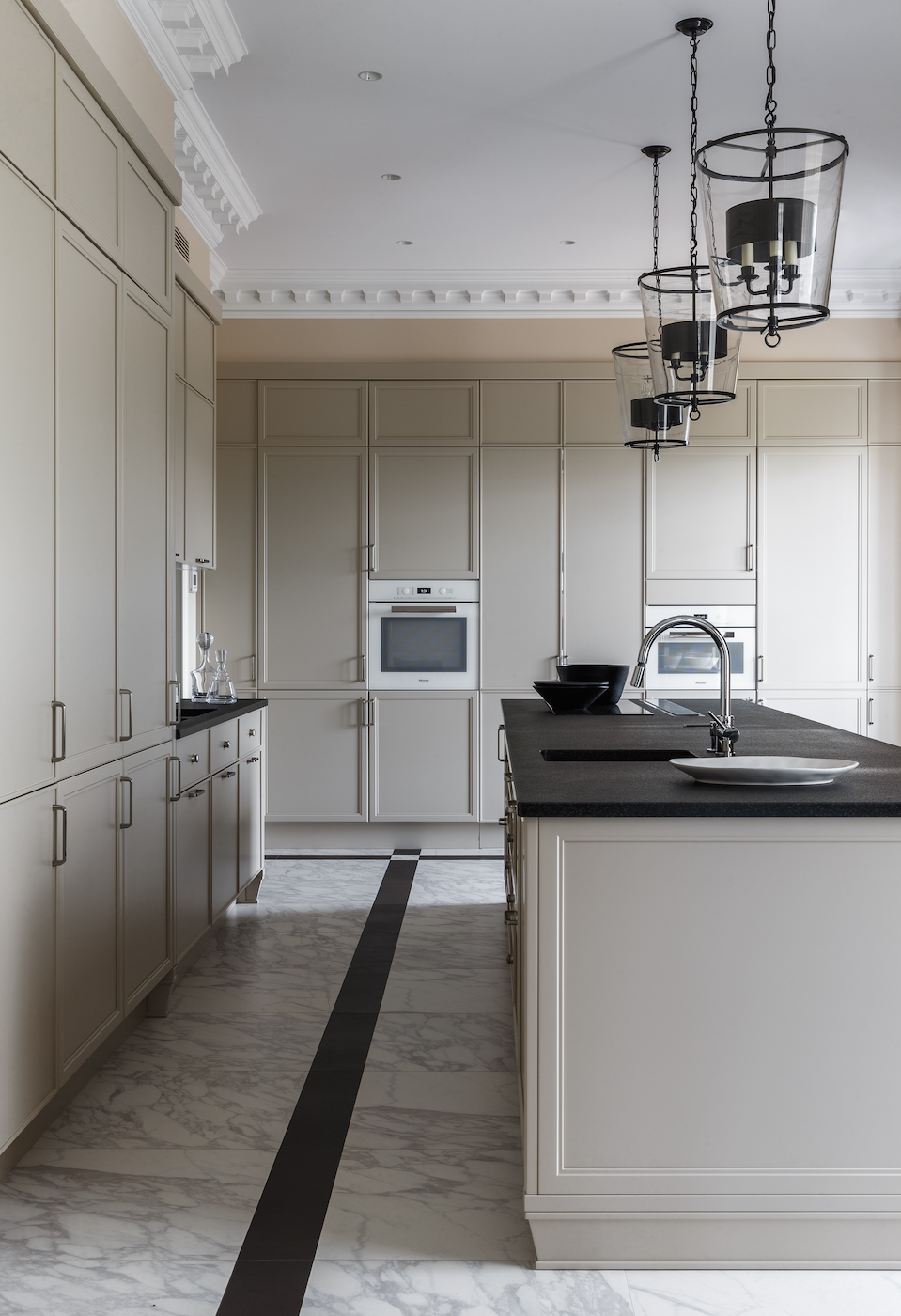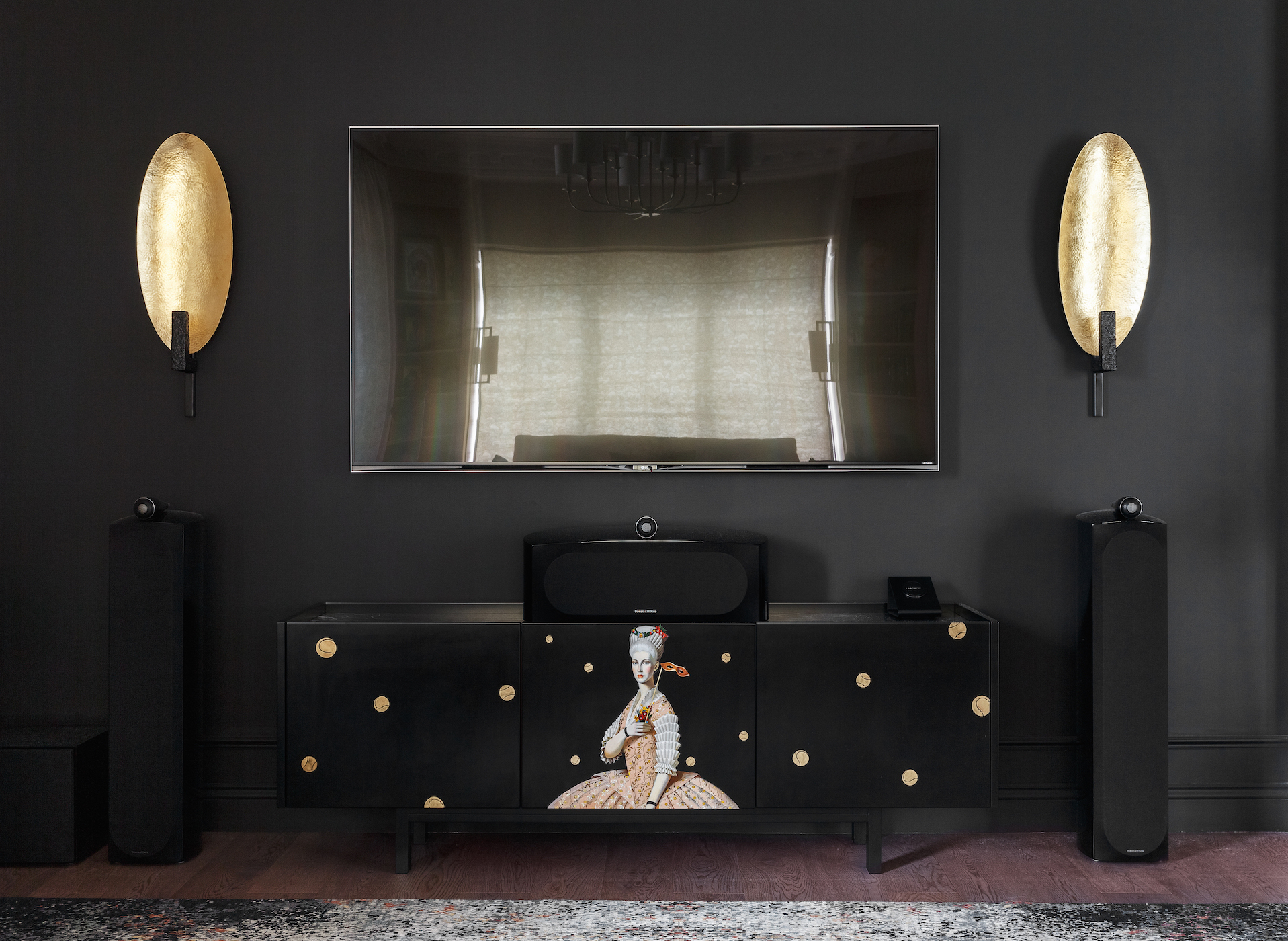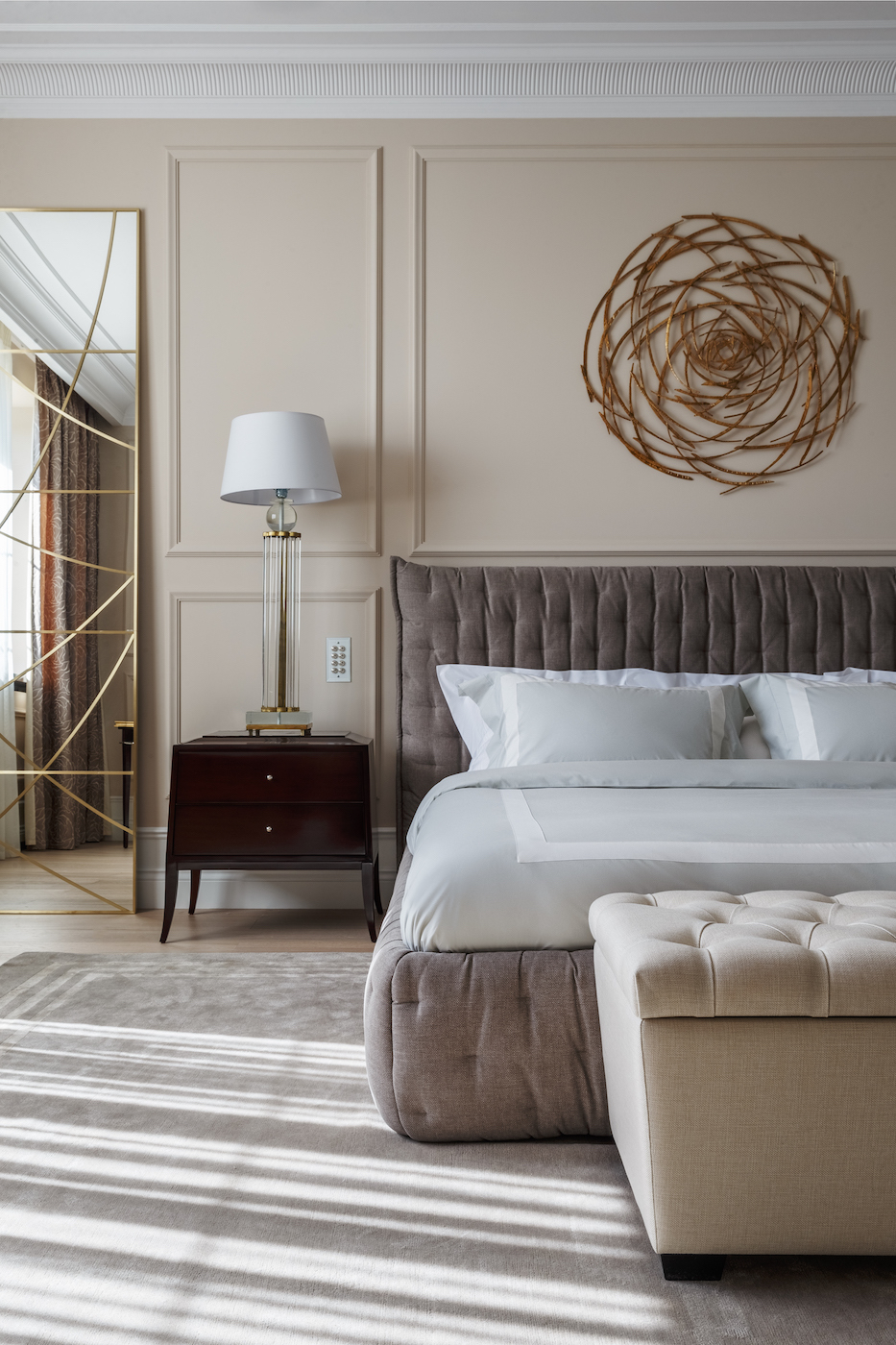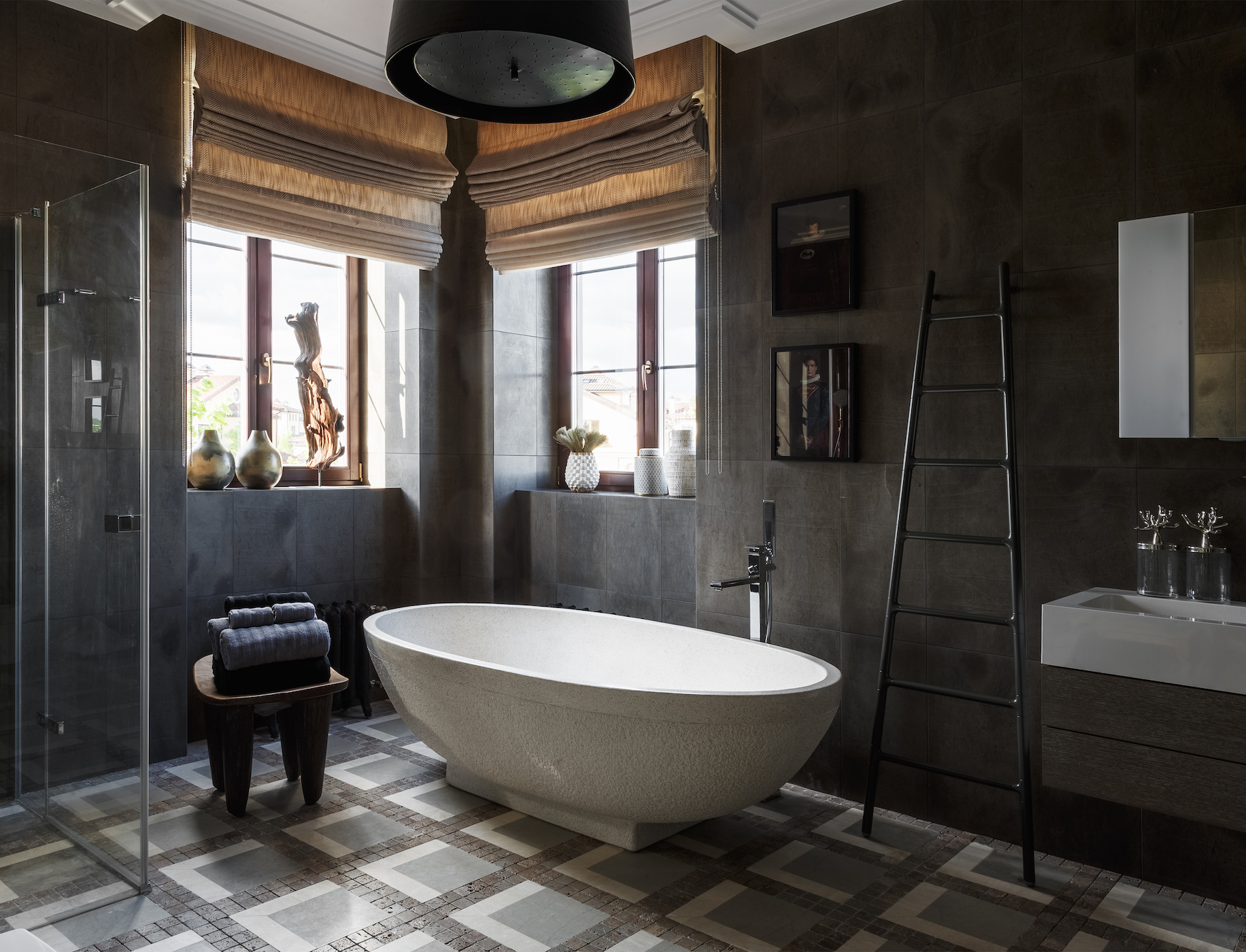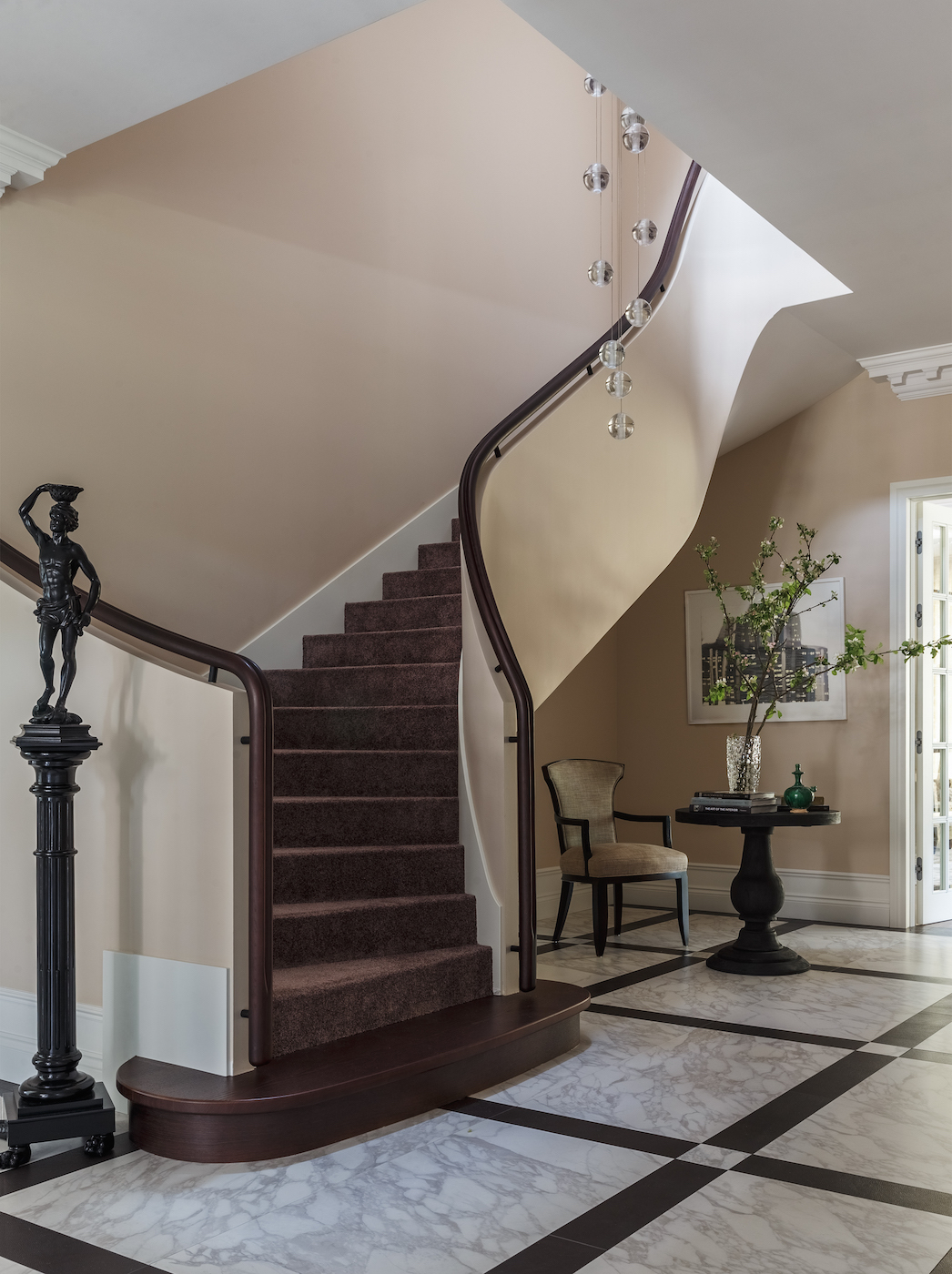An interior design is not about arranging a collection of the things you love but rather about creating a living environment where you must feel comfortable. It is all about the harmony, about keeping the balance between the classics and the contemporary, immediate likings and newest trends. This balance will keep any design project interesting and fresh and modern for many years to come. In search for this balance we often use the opposition technique where we introduce ultramodern objects into an otherwise classical interior and vice versa.
Year: 2016
Country: Russia
City: Moscow region
Space: 1000 sq.m.
For a start we reinvented the architectural concept of the house and developed a new layout. The original plan was a no-go. We merged quite bizarre balconies on the ground floor with the living area. The sundeck was converted into a spacious dining room. As a result we added 100 square meters to the usable area of the house.
We totally re-did the entrance lobby and made it bigger. We also re-positioned all the staircases in the house for the sake of ergonomics and comfort. We added one more staircase. It would lead down to the basement level which we converted into a nice spa area with a hammam and a pool room.
The interior design of the house immediately grabs your attention with its solidity and grandeur. Natural stone and wood, plaster cornices, classical furniture and an enfilade layout are elements of a stylistic approach based on classical American mansions noted for their Palladian style and a nearly achromatic scheme. The architects added some antique objects to the classical design environment. In order to brighten up the design, they used paintings and ethnical objects. These elements include a postmodernist black lacquered chest of drawers decorated with golden tennis balls, a Japanese rice paper screen, a bathtub cut from a single marble block from Indonesia, and contemporary abstract paintings including the Super Flemish pop art series from Sacha Goldberger, Holland.

